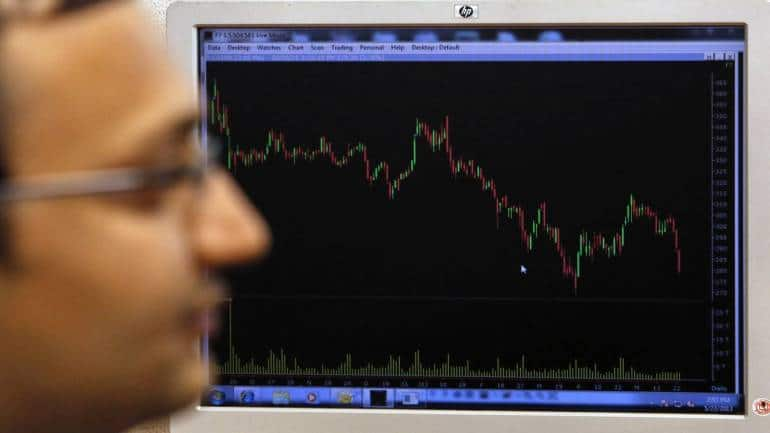Why non-directional options strategies are a must have in trading portfolio
Non-Directional strategy means a combination of options capable of making a pay-off that is indifferent to which direction the underlying is going to go.
SHUBHAM AGARWAL | 12-Dec-20
Reading Time: 3 minutes

Trading directions is what makes trading fun and enticing for all of us. The high of a possibility of a return much higher than the risk-free interest rate cannot be matched. Many of us have been awarded with such possibilities turning into reality as well.
However, here we are going to discuss about a balancing act which acts as sort of a silver lining on a dark could for all those instances when the possibilities do not actually turn into reality. Such balancing act can be achieved with Non-Directional Option Strategies .
We will talk about two set of strategies in this discussion. But before that, let us define Non-Directional. Non-Directional strategy means a combination of options capable of making a pay-off that is indifferent to which direction the underlying is going to go.
So, with direction out of the way, we still need to have something to bet on for us to come out as a winner and get rewarded. That something is the speed of move, in whichever direction it may be. In other words, the trade will be on the volatility instead of direction.
The two set of strategies now are simple to define. One set would be in favor of Volatility going up and one would be in favor of Volatility going down. Let us look at each one and try and find the “When” and “How” of these strategies.
Expected Rise in Volatility : When: This is a rather simple situation. Most of us would know when an underlying is at a pivot point. Without an event in sight, if one senses the underlying stock or index that has been in a lull and trying to break away from a pivotal level, that’s when one would be expecting rise in volatility.
How: This non directional trade is simple. We do not know where the underlying will go, will it pivot upwards or downwards but, we do expect a big move as the pivotal level is distanced a tad bit. So, we will go ahead and buy volatility by Buying both Call and Put of strike close to CMP.
This trade will help in creating a strategy that benefits form a big move immediately. The only flaw here is that it is expensive as a lot of premium will go out of pocket. Also, the strategy starts bleeding of time value form the point we initiate. So, one would be better off exiting this strategy if the move does not come along and a couple of days pass by.
Expected Fall in Volatility: When: Imagine the Underlying has been though a big move in either direction and after a big move the stimulus of the move still stays (whatever triggered the move). There is a bright possibility the risen volatility will tapper off giving either a small pull back after a rise or respite after a fall or ideally just a super calm consolidation.
How: To trade such expected fall in volatility one may just sell both Call and Put of strike close to CMP so, not moving in any direction and fall in volatility helps each day the underlying remains in a lull. The time decay while the volatility falls would tend to benefit.
However, here the risk profile is unfavorable. This is because, for time value benefit due to lack of expected movement in the underlying, we are selling both Call and Put. One needs to have a rather tight exit mechanism here.
To restrict this potentially big loss fueled by potentially big move, I would reckon buying a few strikes lower Put and a few strikes higher Call.
This would reduce the reward but will also restrict the losses to (Difference between Sold strike & Buy Strike - Net Premium Received). The maximum profit would also be limited to the Net Premium received.
Time and again, out of so many symbols being traded on the exchanges, we could find such situations that would give us a potentially non-directional option strategy set-up. It is worth to try and grab those and add a feather of diversification to the directional trading portfolio.
Learn and read more about option buyer from Quantsapp classroom which has been curated for understanding of Iron Condor from scratch, to enable option traders grasp the concepts practically and apply them in a data-driven trading approach.
Recent Articles

Best trading strategies for volatile market: Shubham Agarwal!
12-Apr-25

Trade results better with Options: Shubham Agarwal!
05-Apr-25

Top Options strategies for a short trading week: Shubham Agarwal!
29-Mar-25

Buy after a rise confidently with Collar: Shubham Agarwal!
22-Mar-25

Remove uncertainty, trade pure outperformance with long-shorts: Shubham Agarwal!
15-Mar-25

2 factor authentication for intra-day trades: Shubham Agarwal!
08-Mar-25

Three scanners to find potential reversals: Shubham Agarwal
01-Mar-25

Volatility index as stop loss to buy trades: Shubham Agarwal!
15-Feb-25

SHUBHAM AGARWAL is a CEO & Head of Research at Quantsapp Pvt. Ltd. He has been into many major kinds of market research and has been a programmer himself in Tens of programming languages. Earlier to the current position, Shubham has served for Motilal Oswal as Head of Quantitative, Technical & Derivatives Research and as a Technical Analyst at JM Financial.
Recent Articles

Best trading strategies for volatile market: Shubham Agarwal!
12-Apr-25 11:01:00

Trade results better with Options: Shubham Agarwal!
05-Apr-25 09:39:00

Top Options strategies for a short trading week: Shubham Agarwal!
29-Mar-25 14:42:00

Buy after a rise confidently with Collar: Shubham Agarwal!
22-Mar-25 09:57:00

Remove uncertainty, trade pure outperformance with long-shorts: Shubham Agarwal!
15-Mar-25 09:36:00

2 factor authentication for intra-day trades: Shubham Agarwal!
08-Mar-25 08:57:00

Three scanners to find potential reversals: Shubham Agarwal
01-Mar-25 12:41:00











